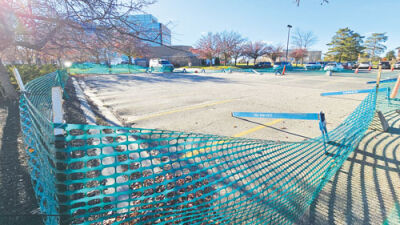ROCHESTER HILLS — First responders are urging residents to check the batteries in their carbon monoxide detectors after a couple in Rochester Hills died from suspected carbon monoxide poisoning.
According to the Oakland County Sheriff’s Office, the daughter of a couple, ages 75 and 74, asked a neighbor to check on her parents at their home in the 1100 block of East Avon Road after she was unable to reach them by phone Nov. 18.
After using a key to enter the home, the neighbors reportedly found the couple unresponsive and not breathing in their bedroom, so they called 911.
After administering CPR, one of the neighbors told dispatchers she began to feel lightheaded, and she was instructed to open as many windows as she could to ward off possible carbon monoxide poisoning, authorities said.
When firefighters arrived at the scene, they ventilated the house, but further attempts to revive the couple were unsuccessful. Authorities said there were no signs of foul play, and an autopsy performed by Oakland County Medical Examiner Dr. L.J. Dragovic showed no signs of any suspicious injuries, although the official cause and manner of death were still pending from the autopsies at press time.
Officials from the Rochester Hills Fire Department said the carbon monoxide level in the home was 185 parts per million — more than twice the lethal reading of 85 ppm.
A carbon monoxide detector was found on a table in the basement near a staircase, but the batteries had been removed and were found nearby. It was unknown if the carbon monoxide detector was in working condition.
“This is a horrific preventable tragedy to lose two people,” Sheriff Michael Bouchard said in a statement. “They actually had a carbon monoxide detector in the home, but for some reason it was not in place and the batteries were out of it. We always encourage people to check their smoke detectors and their carbon monoxide detectors each time we change the clocks for daylight savings.”
Bouchard said it’s a good idea to have more than one carbon monoxide detector in a home, adding that some run on batteries, while others plug in and have a battery backup.
Carbon monoxide alarms, according to authorities, should be installed in a central location outside each bedroom and on every level of the home.
Just like smoke alarms, homeowners are advised to change the batteries, test and interconnect their carbon monoxide detectors, if possible, and make sure the vents for their gas appliances — like the fireplace, dryer, stove and furnace — are free and clear of snow or debris.
Carbon monoxide, or CO, is a gas that forms whenever a fossil fuel is burned. CO is known as the “silent killer” as it is a colorless, odorless and tasteless poisonous gas. Most CO poisonings take place at home and are caused by items that are not properly cared for or vented, such as furnaces, water heaters, generators, gas grills, dryers, lanterns, space heaters, fireplaces, chimneys and gas stoves.
“The best thing for CO is to have alarms — and make sure the batteries are in them. Don’t take them out. Most of them now have the 10-year, sealed lithium-ion batteries so that people can’t remove the batteries. If your smoke alarm or carbon monoxide alarms are more than 10 years old, they should be replaced, whether they are battery or hardwired. Ten years is about the life of the sensors,” said Capt. Ann Echols, assistant fire marshal for the Rochester Hills Fire Department.
A technician from Consumers Energy ran a test on the home’s furnace and determined it was the likely source of carbon monoxide in the home.
Authorities said the case remains under investigation.
“Our thoughts and prayers are with the family and friends as they deal with this terrible loss,” Bouchard said in a statement.
 Publication select ▼
Publication select ▼




















